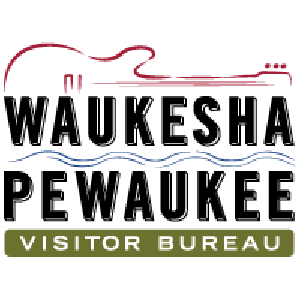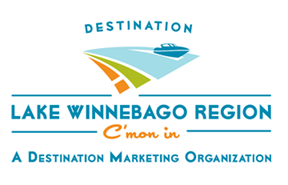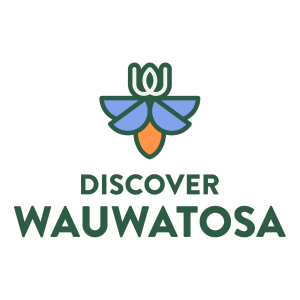Video Magic
01/04/2019
By Clair Urbain
Increasingly, meeting planners are using videos in their pre-event promotions, then following those with live feeds from the meeting itself, then getting extra mileage with timely video postings after the event. “Using video before your event is all about generating enthusiasm for people who have already purchased tickets as well as persuading those who are on the fence about attending. By offering a conference sneak-peek, you give people a feel for what their experience will be like,” says Kristen Craft, business development expert at Wistia, where she specializes in leveraging video marketing.
While video is out of the skill sets of many meeting planners, experts in the field say with today’s smartphone technology, it’s easily within their grasp. That’s how Bonnie Oleson, meeting planner at Mid-West Family Events, sees it. She plans events for radio stations and media outlets in Wisconsin. “If you can show your event in your promotions, it will help response and attendance,” she says.
Oleson has been incorporating videos into her event promotions, and even the events themselves, for about four years. “It’s not that hard, but my advice: if you start, you must keep doing it. People expect it.”
At first, Oleson worked with some video studios in the Madison area to produce promotional videos, but several people at the radio stations she serves have taken an interest in video, and with smartphones, it’s rather easy to produce professional quality videos.
“You can get great quality with a smartphone and a remote microphone,” she says.
Now, staff members at the events capture video that can be used in the future. However, she cautions that using internal people can mean longer production cycles.
“Video houses can turn around good video into usable promotions fast and easily. Video houses also have access to more advanced lighting, which may be needed to capture quality video at some events.”
THINK AHEAD
While jumping into video promotion and subsequent event production with video seems to be a daunting task, Oleson suggests that, like planning a meeting, it is much simpler when it’s broken down into steps.
The first step is gathering video footage. Has anyone captured video from past events? Is there a way to stage some shots or use stock footage to kick-start your video? Often, the local chamber of commerce and visitor bureaus have stock footage that can make good lead-ins or lead-outs for videos.
“We put ‘get video’ on the event host’s or planner’s to-do list,” she says. They develop a shot list ahead of the event, which makes execution easier.
Oleson will work with the event sponsor to develop a promotion plan. “When they are involved, they are more likely to use their resources to help promote the event.” In some instances, like concerts or well-known performances, Oleson has been able to work some trade-out deals with video production houses, getting quality video footage in return for free event tickets.
At the event, it’s simple to stream live footage. “If it’s a meeting with presentations, you can get virtual attendees by allowing subscribers to tap into presentations,” she says. Usually, a stationary camera trained on the speaker will suffice. Those presentations also can be packaged for resale after the event or used as a registration bonus for next year’s meeting.
Oleson says if you’re going to use a video presentation as a post-event promotion, be timely about it and do it right the first time. “If you get a high-quality post-meeting promotion posted that features a speaker, it’s likely that speaker will repost it, increasing its chances of going viral. But if you wait too long, even the presenter will lose interest in viewing or reposting it,” she says.
However, Oleson reminds that the quality must be there first time around. “Very few people will go back and watch a video again because you edited and produced it to look more professional. Do it right the first time,” she says.
Releasing an online video during a conference on a social media platform will get people who aren’t even attending chiming in and creating more momentum and enthusiasm. “By recording all your sessions, you can reuse that content and possibly even sell it if you’re looking for more ways to drive event revenue. Make sure you have stakeholder buy-in about whatever videos you plan to show. This also means testing your equipment and connections before the event begins and then again during breaks. Nothing is as awkward for the speaker and the attendees than seeing someone on stage falter when something fails to play or display properly,” Craft says.
SPEAKER INTRODUCTIONS
Video spots in promotions about speakers can create hype and set the expectation for a great presentation. Speaker promotions can be posted online to help promote the event and even just before the speaker takes the stage to set the tone and mood for the presentation.
“If you choose to go this route, there are some best practices to keep in mind,” says Craft. “It’s OK to poke fun a bit, but tread lightly. Don’t risk offending any speakers or attendees. Also, don’t use too many inside jokes. These kinds of intro videos work best when everyone feels included in the fun.”
Often, speakers will have their own repertoire of videos that you may be able to leverage in your promotions, Craft adds.
PROMOTE THE PARTY
The opening or closing party can be one of the highlights of an event and offering video in real time is a fun way for people to record memories and highlights. The content can be quickly produced and shared on social media to generate even more buzz for your event, says Craft.
“We had one event that edited party footage in real time and shared it with people during the party. Much of the content was recorded earlier in the evening and then edited in an ad-hoc video booth set up in a corner of the party,” she says.
POST-EVENT PROMOTION
Post-event videos can extend memories, enthusiasm and knowledge retention of events. “Make sure some video content is freely available,” says Craft. “Even if you want to monetize recorded talks, don’t put everything behind a paywall. Share at least some of your video content for free, so that people get enough of a taste that they want to engage further.”
Craft suggests creating different kinds of videos for different audiences. “Make short, teaser content to share on social media and share longer, uncut recordings of the talks on your website. You also can edit together testimonials and feedback for a high-energy video to promote the event with new audience members,” Craft says.
Recaps and highlight videos are a great way to reach those people who didn’t attend.
“A highlight video is one of the best ways to drive future sales and attendees because the videos can help create FOMO (fear of missing out),” says Craft.
Presentations captured during the event offer promising sales and exposure post-event. “Regardless of if people attended a specific session or not, they’re going to want the recordings. Whether to re-watch themselves, share with their teams or show colleagues, make sure you record as many of the speaker sessions as you can. You’ll be glad you did,” Craft concludes.











